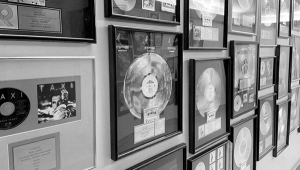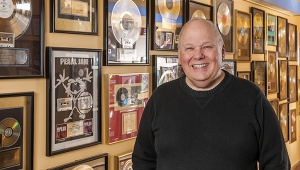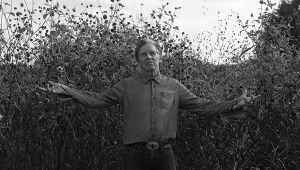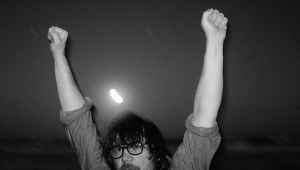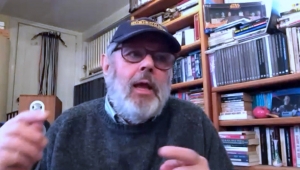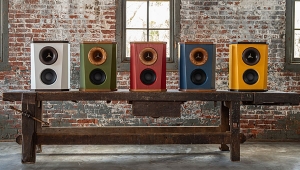| Columns Retired Columns & Blogs |
The Single-Ended Amplifier: Cary's Dennis Had
Cary Audio Design founder Dennis Had is largely responsible for popularizing single-ended amplifiers in America. Since appearing on the scene in 1989, Cary Audio Design has forged its own niche in the high-end audio industry. I spoke with Dennis Had about how he got started building amplifiers, and why he's so committed to single-ended triode designs.
Dennis Had: It all started with a science project I did as a child, which was a single-ended audio amplifier. It was based on a 2A3 [tube] and had all of a couple of watts. It got the blue ribbon, and I was hooked forever.
After that I became intrigued by ham radio. I built some shortwave radios, and had a ham radio license when I was 11. There was a group of us into ham radio and audio. My buddies were building higher and higher output-power amplifiers, and the mentality was that the more power the amplifier had, the better it must sound.
I was going in the opposite direction, trying to replicate the sound of my father's string quartet, which practiced every Friday night in our home. I knew what real music sounded like from hearing that string quartet every week. My objective was to re-create that electronically. I would play back the records they made and try to replicate as closely as I could the sound of the string quartet in our home.
Every time I worked with a single-ended triode instead of a push-pull design it sounded more realistic. Running single-ended, it seemed that the speaker was less prevalent and the sound was fuller and more lifelike.
I remember saving my paper-route money and spending $9.90 for a 300B [output tube], because that was the next step up from a 2A3. My friends were buying 6L6es at 59 a pop, and I'm spending nearly $10 on a 300B. They thought I'd flipped my lid. Their amplifiers were more powerful, but mine sounded more realistic. I still have that first 300B. It has a gazillion hours on it, and it still functions beautifully.
Harley: Was your career in RF design an outgrowth of your experience as a teenager?
Had: My formal career was as an investment banker. A lot of what I did was secure investment funding for companies. I had some ideas to start a company in the RF field, which I knew very well from an engineering standpoint. In 1974, I designed an RF receiving and transmitting converter and founded a company on that design. In 1978, we were number 82 on the list of fastest-growing privately held companies in America. We went from my basement to an industrial park and 70 employees. It was extremely successful.
I was way ahead of the leveraged buy-out boom of the 1980s and in 1978 did a leveraged buy-out of another company. By 1980 I got killed. I sold the whole thing.
But all along the way I was building very sophisticated high-powered audio amplifiers for my own enjoyment. In fact, I had a 300W single-ended amplifier. In my neighborhood, if you wanted to listen to music, you came over to the Had house. I always had this love for audio amplifiers. I didn't know what it was to go out and buy something: I built everything myself.
Harley: What made you go into business building amplifiers for other people?
Had: I started another successful company in 1980 designing and building RF products, and I sold it in 1983. I did some RF design for other people, all the while building audio amplifiers for fun. Then I walked into a new high-end store right here in Cary, North Carolina, and I saw tubed amplifiers—brand-new tubed amplifiers! I was shocked. I knew about Audio Research but never guessed at how popular tubed amplifiers were. I got to know the store owner and bought an amplifier to see what made it tick. I thought it was an accident waiting to happen.
The store owner asked me to work on some of the tubed amps he had in for repair. When I took the stuff home, I saw the shortcomings of each one and knew I could build a better product than what was being offered in the marketplace. At the same time, it would give me an opportunity to present what I considered to be the best-sounding amplifier design: single-ended.
Harley: Wasn't it commercially risky to start a company based on an older, low-powered technology when single-ended amplifiers were virtually unknown in the US in 1989?
Had: You ask yourself which is the greater risk: to build "me-too" products and come into the marketplace against established companies, or to have a product that is totally dissimilar from the run of the mill, one that would stand out because of its unusualness.
Of course, I took the second option. I would rather be recognized for having a different type of product than a copycat product. There were so many people using the same mundane circuit over and over again and just repackaging it. I thought it was better to offer a technology that I personally believed in and was different in the market.
Harley: How do you respond to the question of the poor bench performance of single-ended amplifiers?
Had: You can sometimes fool the marketplace with good-looking test results. But every time I try to make a single-ended design look beautiful on the test equipment, it takes the beauty out of the musical presentation. It's a whole different ballgame between specs and what it sounds like. With single-ended, the lack of feedback, the simplicity of design, and not splitting the signal are more important than test results. Forget about the total harmonic distortion: any of the nasties that may be there are masked by the second harmonic, which isn't offensive to the ear.
Harley: What are the virtues of single-ended?
Had: More than anything, the virtue of single-ended is the simplicity, and that the signal is handled in as linear a fashion as possible. In a push-pull amplifier you split the signal into two halves and then recombine those halves at the amplifier output. I felt that the power amplifier should just replicate what the CD player or turntable is outputting and maintain the integrity of the waveform. Single-ended makes the most common sense from an engineering standpoint and also has the least number of parts in the signal path. You're not taking the signal and dividing it up.
Another key factor is lack of feedback. Feedback is always a correction after the fact. I'll often take apart competitors' amplifiers and remove the feedback. After doing that to many designs, I've found that the feedback is just a big Band-Aid trying to rectify what should have been done right in the first place.
My commitment to single-ended comes from my personal beliefs and designing and listening for the past 38 years.
- Log in or register to post comments

